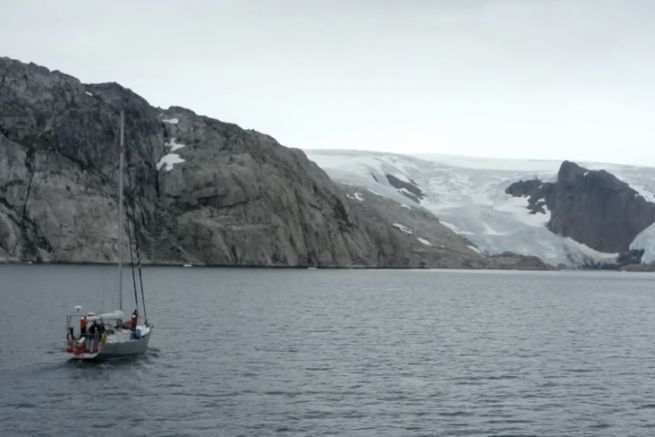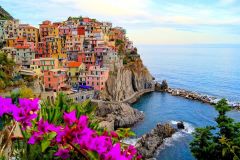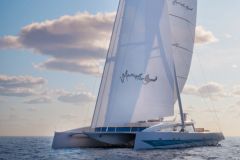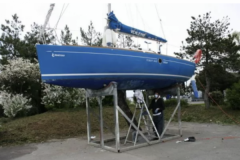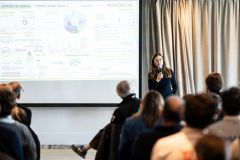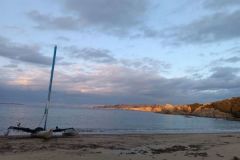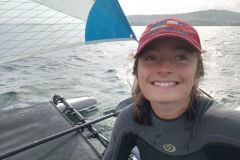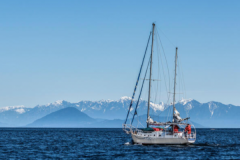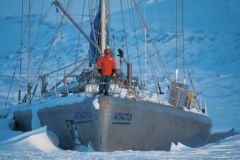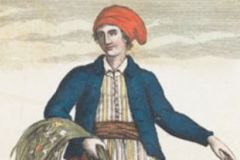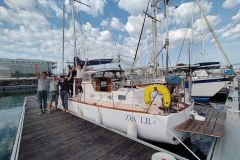According to a report by the Arctic Monitoring and Assessment Program released Thursday, May 20, 2021, the North Pole has experienced an average temperature increase of 3°C in 50 years versus +1°C in the rest of the world.
Let's remember that the Arctic is a sea, the Arctic Ocean. The North Pole is located on the sea covered by a moving mantle of 1 to 4 meters of pack ice with marine depths of 3100 to 5000 meters.
The association "Unu Mondo Expedition" wants to contribute to research in the Arctic and prove to the greatest number of people that the melting ice is a reality. Tobias explains, " The most interesting thing for us is the 4 million people who live above the Arctic Circle and who will tell you about the changes they experience on a daily basis. "
Let's go and meet this young and enthusiastic team which has set itself the ambitious missions of :
- to meet the inhabitants of these regions affected by climate change,
- understand and participate through science projects,
- documenting through films and photographic projects,
- to transmit by raising awareness and educating the younger generations.
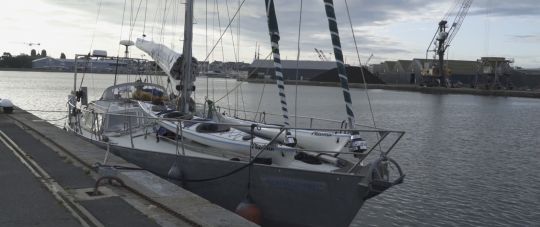
The project of two enthusiasts
It is their meeting and a shared love of sailing and saving the environment that connect Sophie Simonin and Tobias Carter. Our two thirty-somethings create the association "Unu Mondo Expedition" in June 2019, while they are in the Caribbean returning to Europe with Tobias' Swanson 36, bought in Phuket and named Unu Mondo. It's a philosophy, as Tobias, a globe-trotting adventurer who likes to define himself by more than just his nationality, tells us. " Unu mondo, c This is Esperanto, a universal language that connects the people of the world. Because in relation to this problem of global warming, pollution, today we realize that everything is linked. "
Why go to this cold country? It's a cold country, but it's getting warmer, and much faster than elsewhere. After making contact with laboratories and research institutes, and setting up a small stand at the Grand Pavois exhibition, the adventure was launched to the public. The expedition project can unfold: to be useful to researchers, to go up there with a media team and to testify about what happens there.
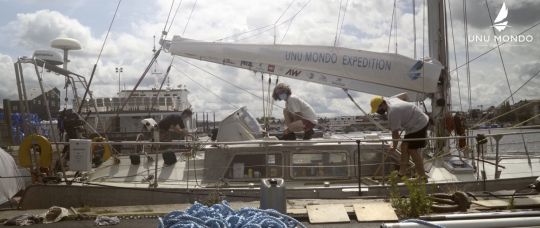
A mythical sailboat
" We found and bought the boat in January 2020. Northabout was not renamed, as it has a real history in the heart of the Arctic. " This unique 47-foot, 20-ton sailboat was designed by Gilbert Caroff and inspired by the plans of a Nadja 15. Its amateur construction in 2000 by Irishmen with a reinforced aluminum hull and a bow made to break the ice allows it to write a new page of navigation in the polar regions.
She is the only ship in the world to have made 2 circumnavigations of the Arctic, with these famous maritime passages: the North West Passage (quite well known) and the North East Passage (over Russia).
It was bought in 2015 by a British adventurer rather mountaineer and climber at the North Pole and South Pole, Sir David Hempleman-Adams. This one noticed the climatic changes affecting the polar regions and the high mountain regions. He made the tour of the Arctic in 4 months and 1 day on Northabout. The containment period from March to June 2020 at the commercial port of Bristol (UK) allows for refurbishment work (crack in the daggerboard shaft), insulation and solar panel equipment.
Tobias explains that " the sailboat is used here as a logistical platform to do science because there is room on board (up to 10 people), because the carbon footprint is low, and because we need science to communicate on the consequences of climate change. "
First expedition to Greenland in 2020
The days go by at 100 miles an hour, between preparing the boat, finding partners and crew, communicating with the media and the numerous steps to take before the departure.
This one, announced on May 30, 2020, will finally take place on July 6, departing from Roscoff, for a two-week non-stop navigation to Greenland.

The conditions are tough and the crew, made up of Sophie and Tobias (skippers), Thomas BOUR, Lucas BOITIER, Julien FUMARD (the 3 mediamen) and Michaël FONDER (scientist from the University of Liège), moor up quickly.
Qaqortoq is the first stop of the expedition. Nicknamed the white city, it is the largest city in the south of Greenland. The country counts 56 000 inhabitants on a territory which represents almost 4 times France in surface, and is mainly made up of small villages and hamlets. There is no road infrastructure here, and travel is by helicopter or boat. The population is mainly Inuit and keeps a certain autonomy and independence despite its belonging to the kingdom of Denmark. All consumer products are imported by sea or air from Denmark.
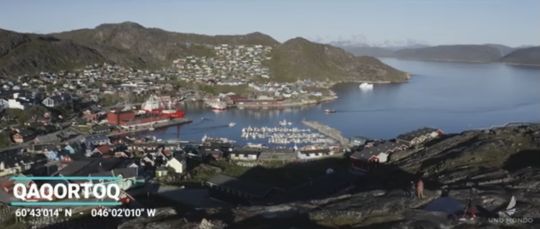
Hunting and fishing are the daily life of the locals. An activity is developing which did not exist 20 or 30 years ago: agriculture.
The visit to Upernaviarssuk (a small village with a farm) is the proof: they plant some vegetables there, including potatoes and turnips. Thanks to the warmer summers, they are finding it easier to test and grow cucumbers, tomatoes, carrots, and strawberries in the greenhouse.
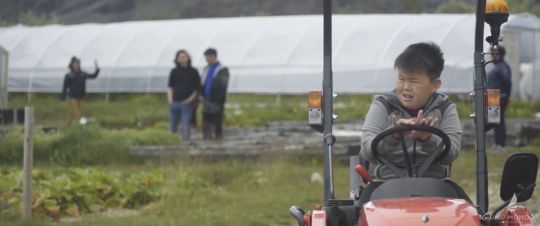
... and the first chilling findings
It is on the Greenland ice sheet (a very large glacier) that the consequences of global warming are most visible. In fact, all the GPS equipment on Northabout indicates dry land while the sailboat is floating and moving forward... the glacier is several kilometers ahead of the bow.
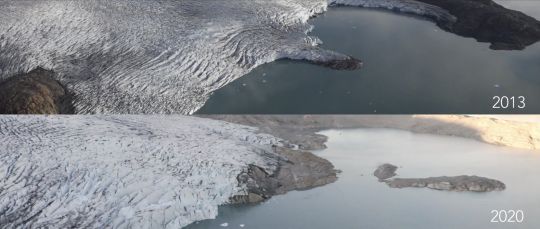
In Igaliku, Christian is an archaeologist, and he confirms a notable acceleration of phenomena such as the melting of the permafrost and the increase in precipitation. The ice is melting at a rate of 10,000 m3 every day and represents on average 40 to 50% of the global rise in water levels. At the base, the glacier must be in equilibrium: it must snow as much at altitude as it melts at the edges. Greenland has not been in balance since the 1990s. There is no credible scenario where the climate would stabilize over the next 100 years.
And the local population is not fooled. As Aayu says in the report: " No one here is asking if the climate is changing: everyone has known it for at least 10 years. "
Four months in the field
The trip to Greenland allowed the release of 3 Météo France buoys in the middle of the Atlantic, which will be used to provide weather data and to study ocean currents.
Numerous samples are taken for the Locean institute, for isotope and salinity analysis of the sea water.
4000 poplars and spruces are planted in less than 2 weeks around Narsaq in partnership with Greenland Trees Association, to create an ecosystem as a legacy.
The KATABATA project, supported by the University of Liege, partner of Unu Mondo, can be deployed on the ground. Michaël has to receive the 400 kg of parcels, to load them as best he can on Northabout, where all the spaces are used. It is finally time to carry out by hand the assembling and installation of 3 weather stations on a small island off Nanortalik, on a small hill at the edge of a fjord, and in a glacier valley. Measuring the potential of katabatic and synoptic winds in South Greenland will allow to consider the replacement of fossil fuel power plants by other sources such as wind power, and to decarbonize the energy sector.
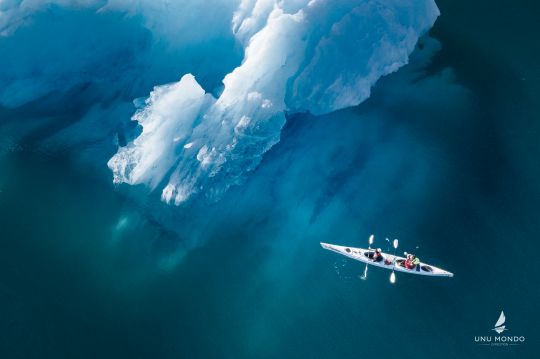
The transmission
Back in France on October 1st, Tobias and Sophie are deploying the third part of their concrete actions: the pedagogy by intervening in classes and by organizing conferences all over France.
A tour between January and March 2021 saw 7,000 students throughout France. Polar education - What is an iceberg? What is a glacier? What is the polar ice cap? - allows to make the link with the climate changes and the possible actions.
Tobias is enthusiastic: " It works well to go into schools and show them that there are young people who are committed. We need to mobilize and take action, show what's going on without admitting defeat. "
In order to promote Education for Sustainable Development, Sophie has created and made available interesting teaching aids in the form of cards according to the cycles (primary, secondary, high school) with many themes around life on board, the geography of the North Pole, climate change and its consequences.
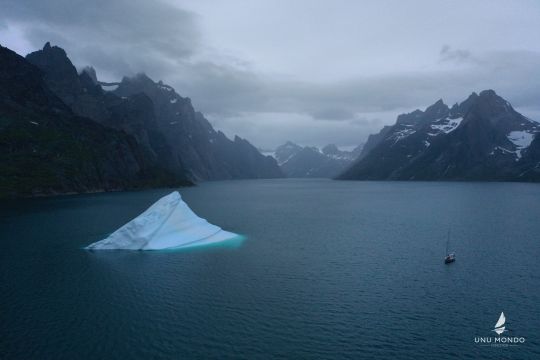
The partners
Unu Mondo has the support of Jean-Louis Etienne, a famous doctor and explorer, who reminds us that " the Arctic changes color ". The support of the Explore Foundation and the Nicolas Hulot Foundation for Nature and Mankind in 2020, as well as numerous donations and financial contributions from scientific partners, allow us to make a satisfactory assessment of the first season. The media coverage is relayed by France Bleue La Rochelle and by Sky News (Anglo-Saxon media) which will broadcast some reports on the association this summer.
Sympathizers are welcome and can register on the website and make private donations, from 2 euros, a symbolic mark to join the project Unu Mondo, and support them.
Upcoming projects
The association is structured with about thirty active members, and an office. A new 5-year project has already been launched, in order to set up scientific missions with identified partners.
The meetings in May while sailing up the French coast (Ifremer, IPEV) and then in England with the University of Southampton and the British Antarctic Survey should allow us to develop links with research institutes and schools this year, as transmission is essential.
Tobias wishes " to continue in the Arctic, that's really what drives us. There are still many things to see. Last year we saw only a small part: we did not go up to the top . "> This summer, the first step is the 66°N Expedition to Iceland, on research projects with the University of Iceland and with the LOCEAN laboratory in Paris.
The will assumed for the following years is to continue the missions, in Svalbard, then on the East coast of Greenland, before envisaging the third circumnavigation of Northabout with the East, North-East and North-West passage in two years. Meeting the populations, because there are different problems according to the regions, will allow us to propose a global understanding of the Arctic.
Climate change is real.
Unu Mondo has this will to raise awareness without scaring people, by popularizing scientific studies, by relying on testimonies of men and women who live these upheavals in their daily lives, by showing these images and their faces. Our world is unique and is changing. It is undeniable and we must anticipate it. We must learn and act to preserve it.
